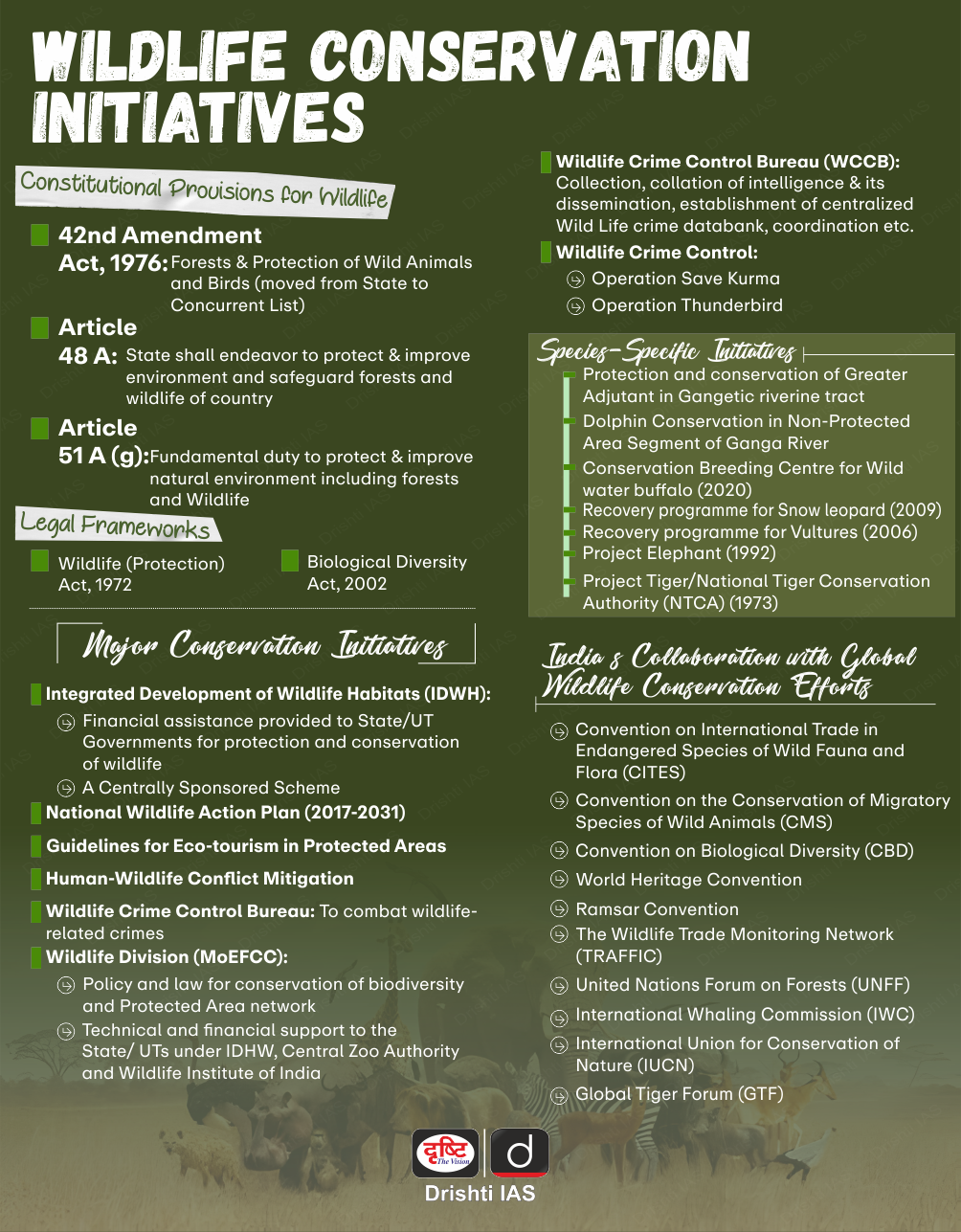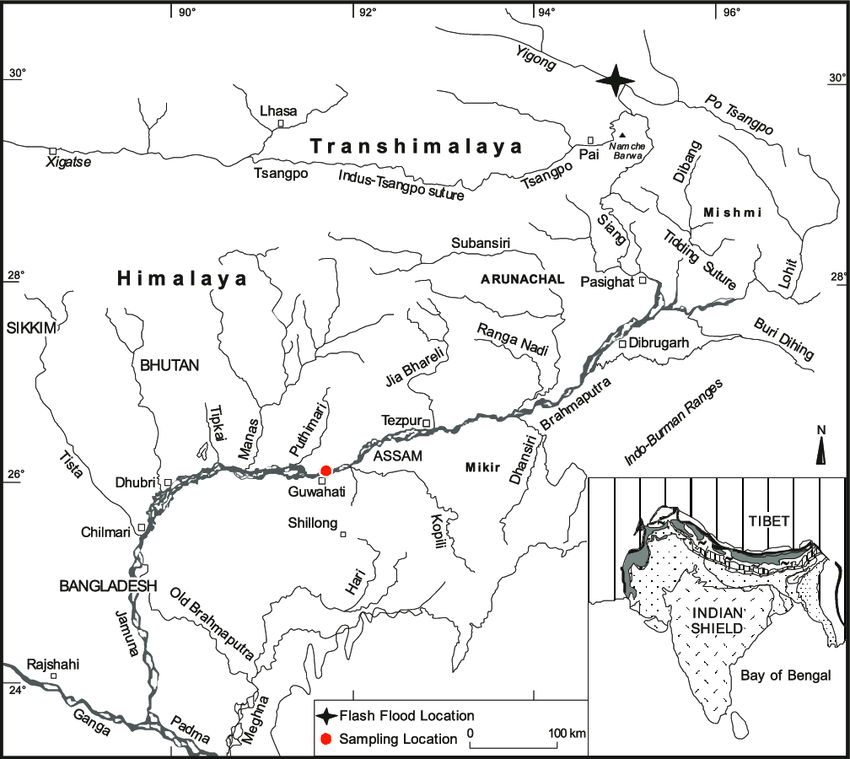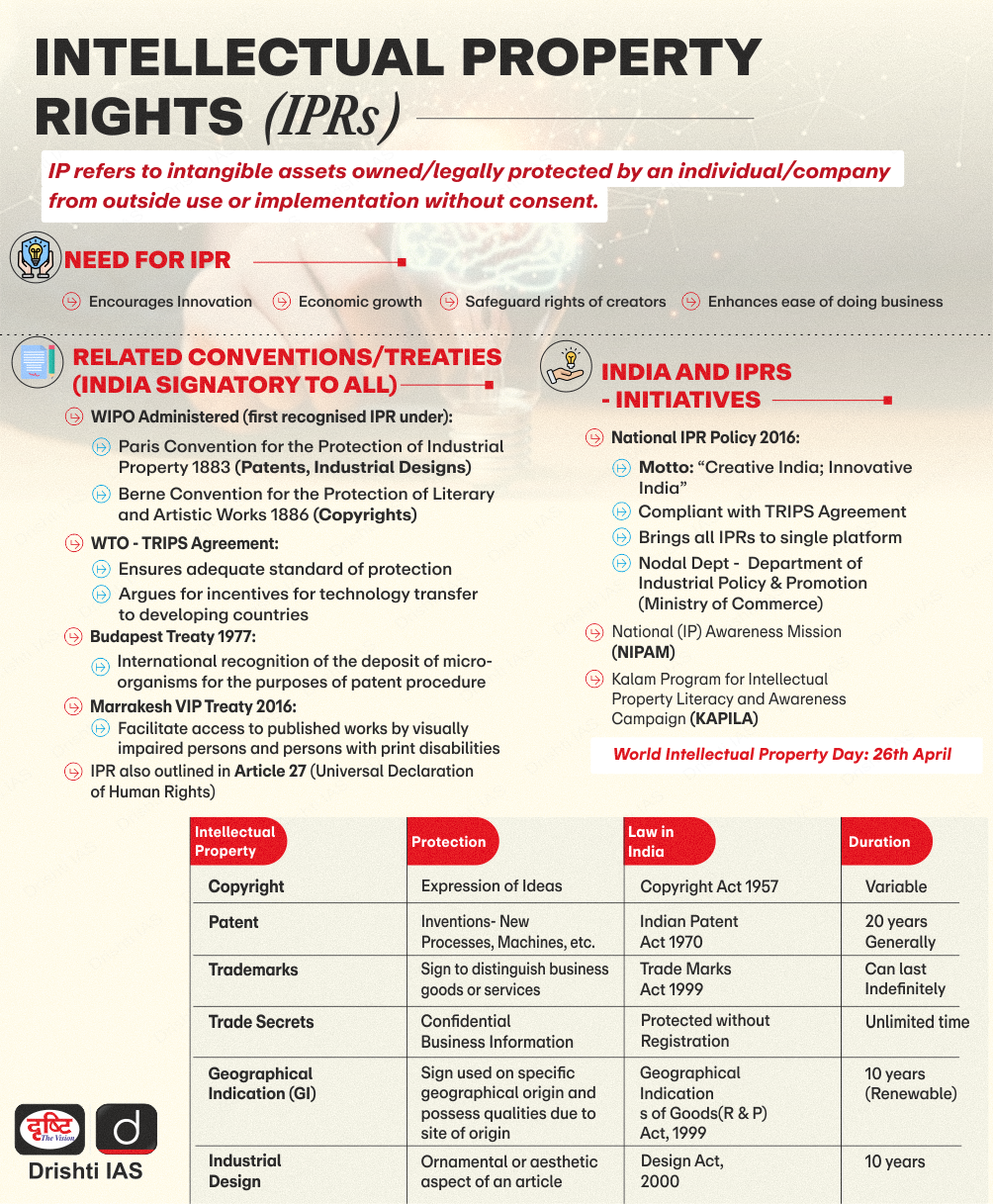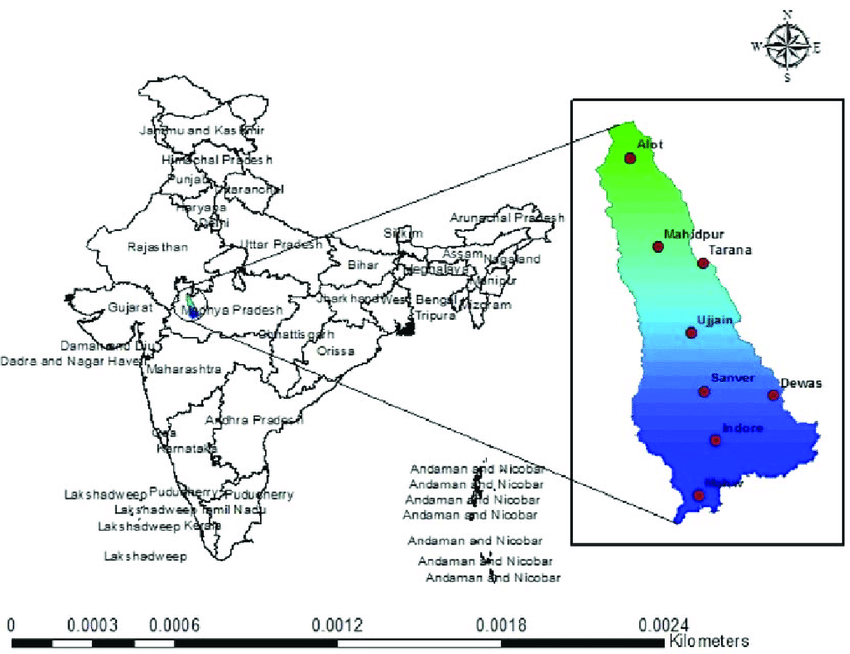Infographics
Social Justice
Health Effects of Covid-19 Related Immunisation Disruptions
For Prelims: Covid-19 pandemic, Measles, Rubella, HPV (Human Papillomavirus), Hepatitis B, Diphtheria, Tetanus, and Pertussis (DTP) vaccine.
For Mains: Health effects of Covid-19 Related Immunization Disruptions, Government Policies & Interventions.
Why in News?
Recently, a new paper has been published in the journal The Lancet Global Health titled- Estimating the Health Effects of Covid-19-Related Immunization Disruptions in 112 Countries During 2020–30: A Modelling Study, which highlights that Global immunization declined during the Covid-19 pandemic, increasing disease burden and outbreak risk.
What are the Key Highlights of the Report?
- Global Immunisation Decline:
- The Covid-19 pandemic led to a decline in global immunisation coverage, which increased disease burden and outbreak risks across various countries.
- It is estimated that disruptions to Measles, Rubella, HPV (Human Papillomavirus), Hepatitis B, meningitis A, and yellow fever vaccination could lead to approximately 49,119 additional deaths during the calendar years 2020–2030, with measles being the main contributor to this increase in mortality.
- For the years 2020–2030, disruptions in vaccination coverage across all 14 pathogens could result in a 2.66% reduction in the long-term effect, translating to a decrease in the number of deaths averted from 37,378,194 to 36,410,559.
- Importance of Catch-Up Vaccines:
- The importance of catch-up vaccines is emphasised, particularly for diseases like measles and yellow fever, which experienced an immediate increase in burden post-pandemic.
- Catch-up activities were found to be effective in averting excess deaths, with the potential to prevent approximately 79% of excess deaths related to measles, rubella, HPV, hepatitis B, and yellow fever.
- Impact on DTP Vaccine Coverage:
- The pandemic impacted coverage for the Diphtheria, Tetanus, and Pertussis (DTP) vaccines, resulting in an additional 6 million children missing out on vaccination in 2021 globally.
- Resurgence of Measles Cases:
- There has been a resurgence of measles cases reported in several countries, including those where measles was previously considered eradicated, such as the United Kingdom and the United States.
- In 2021, nearly 61 million measles vaccine doses were postponed or missed due to Covid-19-related delays in immunisation campaigns in 18 countries.
- Furthermore, in 2022, there was an increase in measles cases and deaths globally compared to 2021 levels, with millions of children missing their vaccine doses, particularly in countries like Nigeria, Pakistan, and India.
- There has been a resurgence of measles cases reported in several countries, including those where measles was previously considered eradicated, such as the United Kingdom and the United States.
- Recommendations:
- Effectiveness of Catch-Up Activities: The study suggested that implementing catch-up vaccination activities could potentially avert 78.9% of excess deaths between calendar years 2023 and 2030.
- This means that proactive catch-up efforts have the potential to significantly mitigate the adverse impacts of vaccine-coverage disruptions.
- Importance of Timing and Targeting of Catch-Up Activities: It is important for timely implementation of catch-up vaccination activities, tailored to specific cohorts and regions most affected by disruptions.
- This targeted approach can help improve vaccine coverage and mitigate the adverse effects of under-immunization.
- Significance of Continued Immunisation Efforts: Continued importance of sustained immunization efforts, particularly for vaccines like HPV is important, which play a crucial role in preventing cervical cancer.
- This underscores the necessity of ongoing vaccination campaigns even amidst disruptions to ensure long-term public health benefits.
- Effectiveness of Catch-Up Activities: The study suggested that implementing catch-up vaccination activities could potentially avert 78.9% of excess deaths between calendar years 2023 and 2030.
What are the Major Initiatives Related to Immunisation?
- Global:
- Immunisation Agenda 2030 (IA2030): It sets an ambitious, overarching global vision and strategy for vaccines and immunisation for the decade 2021–2030.
- By the end of the decade, IA2030 aims to:
- Reduce by 50% the number of children receiving zero vaccine doses
- Achieve 500 introductions of new or under-utilised vaccines in low- and middle-income countries
- Achieve 90% coverage for essential childhood vaccines
- By the end of the decade, IA2030 aims to:
- World Immunisation Week: It is celebrated every year in the last week of April.
- Big Catch-Up Initiative: It was launched by the WHO, UNICEF, Bill & Melinda Gates Foundation along with Immunization Agenda 2030 and many other global and national health partners, a targeted global effort to boost vaccination among children following declines driven by the Covid-19 pandemic.
- Immunisation Agenda 2030 (IA2030): It sets an ambitious, overarching global vision and strategy for vaccines and immunisation for the decade 2021–2030.
- Indian:
- Universal Immunization Programme (UIP):
- The program provides free immunization against 12 vaccine-preventable diseases.
- Nationally Against 9 Diseases: Diphtheria, Pertussis, Tetanus, Polio, Measles, Rubella, severe form of Childhood Tuberculosis, Hepatitis B and Meningitis & Pneumonia caused by Haemophilus influenza type B
- Sub-nationally Against 3 Diseases: Rotavirus diarrhoea, Pneumococcal Pneumonia and Japanese Encephalitis
- Two major milestones of the UIP have been the eradication of polio in 2014 and the elimination of maternal and neonatal tetanus in 2015.
- Mission Indradhanush:
- Mission Indradhanush (MI) was launched by the Ministry of Health and Family Welfare (MOHFW) in 2014 to vaccinate all unvaccinated and partially vaccinated children under UIP.
- It is being implemented in several phases.
- Mission Indradhanush (MI) was launched by the Ministry of Health and Family Welfare (MOHFW) in 2014 to vaccinate all unvaccinated and partially vaccinated children under UIP.
- Universal Immunization Programme (UIP):
UPSC Civil Services Examination, Previous Year Questions (PYQs)
Prelims:
Q1. Consider the following statements:
- Adenoviruses have single-stranded DNA genomes whereas retroviruses have double-stranded DNA genomes.
- Common cold is sometimes caused by an adenovirus whereas AIDS is caused by a retrovirus.
Which of the statements given above is/are correct?
(a) 1 only
(b) 2 only
(c) Both 1 and 2
(d) Neither 1 nor 2
Ans: (b)
Mains:
Q. Critically examine the role of WHO in providing global health security during the Covid-19 pandemic. (2020)

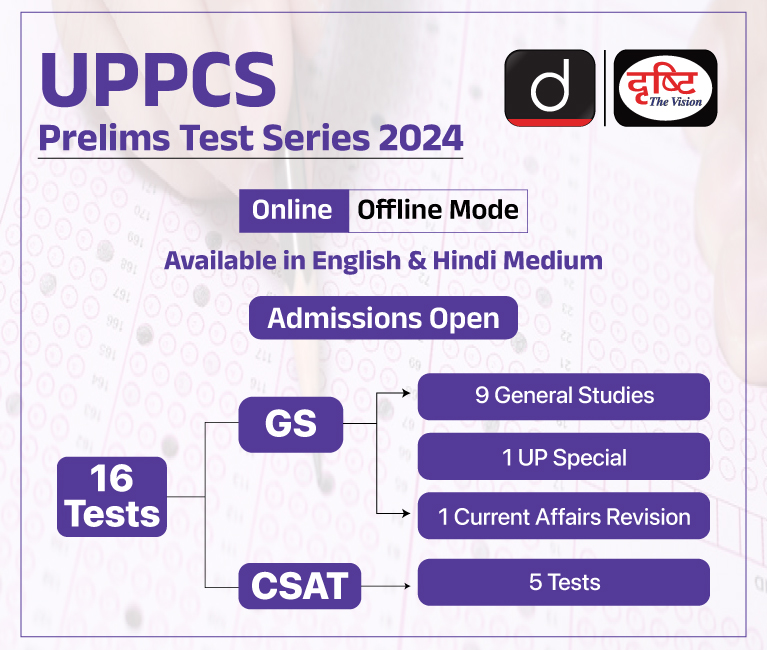
Governance
Banning Cotton Candy
For Prelims: Banning Cotton Candy, Rhodamine B, Food Safety and Standards Authority of India (FSSAI), Food Safety & Standards Act, 2006.
For Mains: Banning Cotton Candy, Food and Nutrition insecurity.
Why in News?
Recently, Himachal Pradesh has instituted a one-year ban on the production, sale and storage of Cotton Candy or Candy floss after the presence of Rhodamine B, a potentially hazardous colouring agent.
- The ban is on the heels of states like Karnataka, Tamil Nadu and Goa, which have implemented similar restrictions on harmful colouring agents.
- Consumption of snacks containing these artificial colours may pose long-term health risks, including Cancer.
What is Cotton Candy?
- Cotton candy, also known as candy floss or fairy floss in some regions, is a type of spun sugar confectionery that is typically served at carnivals, fairs, and amusement parks.
- It is made by heating and liquefying sugar and then spinning it out through tiny holes where it re-solidifies in long strands.
- These strands are gathered onto a cone or stick, forming a fluffy, cotton-like texture.
What is Rhodamine B?
- About:
- Rhodamine B is a colouring agent commonly used in textile, paper, and leather industries. The colourant is low-cost and is sometimes used to give vibrant hues to popular street food items such as gobi manchurian and cotton candy.
- The dye is not fit for consumption and may lead to acute toxicity. Exposure to the chemical may also damage the eye and cause irritation in the respiratory tract.
- While the World Health Organisation, which maintains a list of cancer-causing agents, says it cannot be classified as carcinogenic to humans, there are some studies on rats that have shown carcinogenic effects.
- Usage in Food Products:
- It is not commonly added to food products, Rhodamine B is usually reported from small roadside vendors in small cities.
- This is because of a lack of understanding about dyes that are permissible in food items. Small vendors are not aware that this dye can be harmful as its effects might not always be felt immediately.
- It is usually “illegally” added to preparations such as gobi manchurian, potato wedges, butter chicken, pomegranate juice, ice creams produced on a small scale, or cotton candies.
- It is not commonly added to food products, Rhodamine B is usually reported from small roadside vendors in small cities.
- Legality:
- Food Safety and Standards Authority of India (FSSAI) has specifically banned Rhodamine B from being used in food products.
- Any use of this chemical in the preparation, processing, and distribution of food is punishable under the Food Safety & Standards Act, 2006.
What Food Colours are Allowed by the Food Safety Act, 2006?
- The FSSAI allows the use of very few natural and synthetic colours in food items. They are,
- The Natural Food Colours:
- Carotene and Carotenoids (yellow, orange): These are natural pigments found in many fruits and vegetables, such as carrots, pumpkins, and tomatoes. They are responsible for the yellow, orange, and red colors in these foods.
- Chlorophyll (green): Chlorophyll is the pigment responsible for the green colour in plants. It is commonly used as a natural food colouring agent.
- Riboflavin (yellow): Riboflavin, also known as vitamin B2, is a yellow-coloured compound found in various foods. It is sometimes used as a food colouring agent.
- Caramel: Caramel is a natural food colouring agent derived from the heating of sugar. It can range in colour from pale yellow to deep brown, depending on the degree of caramelization.
- Annatto (Orange-Red): Annatto is a natural food colouring derived from the seeds of the achiote tree. It imparts a vibrant orange-red colour to foods and is commonly used in cheese, butter, and other dairy products.
- Saffron: Saffron is a spice derived from the flower of the Crocus sativus plant. It is known for its intense yellow colour and is one of the most expensive spices in the world.
- Curcumin (Yellow, from Turmeric): Curcumin is the main active compound found in turmeric. It is responsible for the yellow colour of this spice and is used as a natural food colouring agent.
- The Synthetic Colours:
- Ponceau 4R: A synthetic red colour commonly used in various food and beverage products.
- Carmoisine: Another synthetic red colour often used in food colouring.
- Erythrosine: A synthetic red colour commonly used in food colouring, especially in sweets and candies.
- Tartrazine and Sunset Yellow FCF: Synthetic yellow colours widely used in various food products.
- Indigo Carmine and Brilliant Blue FCF: Synthetic blue colours used in food colouring.
- Fast Green FCF: A synthetic green colour used in food products.
- The Natural Food Colours:
- Even permissible food colourings, however, are not allowed in all food items. Some food items that can use these colours include ice creams, biscuits, cakes, confectioneries, fruit syrups and crushes, custard powder, jelly crystals, and carbonated or noncarbonated beverages.
What is the Food Safety and Standards Authority of India?
- About:
- FSSAI is an autonomous statutory body established under the Food Safety and Standards Act, of 2006.
- The Act of 2006, consolidates various laws related to food, such as the Prevention of Food Adulteration Act, 1954, the Fruit Products Order, 1955, the Meat Food Products Order, 1973, and other acts that were previously handled by different ministries and departments.
- The Act also aims to establish a single reference point for all matters relating to food safety and standards, by moving from multi-level, multi-departmental control to a single line of command.
- The Act of 2006, consolidates various laws related to food, such as the Prevention of Food Adulteration Act, 1954, the Fruit Products Order, 1955, the Meat Food Products Order, 1973, and other acts that were previously handled by different ministries and departments.
- FSSAI is responsible for protecting and promoting public health by regulating and supervising food safety and quality in India, operating under the Ministry of Health & Family Welfare.
- FSSAI has a headquarters in New Delhi and regional offices in eight zones across the country.
- The Chairperson and Chief Executive Officer of FSSAI, appointed by central government. The Chairperson is in the rank of Secretary to the Government of India.
- FSSAI is an autonomous statutory body established under the Food Safety and Standards Act, of 2006.
- Functions and Powers:
- Framing of regulations and standards for food products and additives.
- Granting of licences and registration to food businesses.
- Enforcement of food safety laws and regulations.
- Monitoring and surveillance of food safety and quality.
- Conducting risk assessment and scientific research on food safety issues.
- Providing training and awareness on food safety and hygiene.
- Promoting food fortification and organic food.
- Coordinating with other agencies and stakeholders on food safety matters.
- Events and Campaigns:
UPSC Civil Services Examination, Previous Year Question
Prelims:
Q. Consider the following statements: (2018)
- The Food Safety and Standards Act, 2006 replaced the Prevention of Food Adulteration Act, 1954.
- The Food Safety and Standards Authority of India (FSSAI) is under the charge of Director General of Health Services in the Union Ministry of Health and Family Welfare.
Which of the statements given above is/are correct?
(a) 1 only
(b) 2 only
(c) Both 1 and 2
(d) Neither 1 nor 2
Ans: (a)
Mains:
Q.1 Elaborate the policy taken by the Government of India to meet the challenges of the food processing sector. (2021)


Geography
Integrated River Basin Management
For Prelims: Indus Waters Treaty, Ganga, Brahmaputra, Yamuna
For Mains: Effective river planning, Necessity of multilateral treaties for effective management of Rivers, Indus Waters Treaty
Why in News?
A recent report authored by the Kathmandu-based International Centre for Integrated Mountain Development (ICIMOD) and the Australian Water Partnership has emphasized the need for multilateral treaties for effective integrated river basin management of the Indus, Ganga, and Brahmaputra rivers.
What are the Key Highlights of the Report?
- Integrated River Basin Management:
- The report emphasizes the importance of integrated river basin management, which involves a basin-wide approach to river planning, backed by quality data sharing on water availability, biodiversity, and pollution among all stakeholders.
- Need for Multilateral Treaties:
- Despite existing bilateral treaties and agreements on water data sharing, there is a notable absence of multilateral agreements for river management in the region, posing a challenge to effective governance.
- It emphasizes the necessity for establishing multilateral treaties to manage the Indus, Ganga, and Brahmaputra rivers effectively.
- Despite existing bilateral treaties and agreements on water data sharing, there is a notable absence of multilateral agreements for river management in the region, posing a challenge to effective governance.
- Dependence on Critical Rivers:
- Millions of people in India, Tibet (China), Pakistan, Afghanistan, Nepal, and Bhutan rely on the Indus, Ganga, and Brahmaputra rivers for food and water security, making comprehensive management strategies imperative.
- All three basins are part of the larger Indus-Ganga-Brahmaputra (IGB) Plain, a vast alluvial plain that spans across parts of India, Pakistan, Bangladesh, and Nepal.
- Ganga River Basin:
- 600 million Indians, 29 million Nepalese, and millions in Bangladesh live in this basin area.
- No agreement involving Nepal, India, and Bangladesh.
- Indus River Basin:
- Lifeline for 268 million people living in its basin.
- Brahmaputra River Basin:
- Approximately 114 million people depend on it for water, electricity, food, agriculture, and fishing.
- Millions of people in India, Tibet (China), Pakistan, Afghanistan, Nepal, and Bhutan rely on the Indus, Ganga, and Brahmaputra rivers for food and water security, making comprehensive management strategies imperative.
- Recommendations:
- Recognising and leveraging the knowledge of local communities for effective crisis management.
- Empowering local communities with resources and technology to enhance their resilience.
- Addressing data gaps related to water availability, biodiversity, and pollution in the river basins for better management and early warning systems.
- Adopting a holistic 'whole basin' research approach that facilitates data-sharing, strategic planning, understanding climate change impacts, and ensuring reliable water supply.
- Promoting 'hydro-solidarity' and climate diplomacy among researchers from different countries to build trust and foster dialogue on transboundary water issues.
- 'Hydro-solidarity' is about promoting cooperation and solidarity among nations in managing shared water resources. It involves recognising the interdependence of countries regarding water resources and the need for collective action to address water-related challenges.
- This includes implementing fair water-sharing agreements, promoting collaborative governance, investing in water infrastructure, and addressing the water-energy-food nexus.
- Climate diplomacy plays a crucial role in addressing water stress caused by climate change, and integrating water diplomacy with climate diplomacy can help tackle the interconnected challenges of water scarcity and climate change.
- 'Hydro-solidarity' is about promoting cooperation and solidarity among nations in managing shared water resources. It involves recognising the interdependence of countries regarding water resources and the need for collective action to address water-related challenges.
- Recognising and leveraging the knowledge of local communities for effective crisis management.
What are the Key Facts About the Ganga, Indus and Brahmaputra River Basin?
- Ganga River Basin:
- Source and Headwaters:
- The Ganga originates as Bhagirathi from Gangotri Glacier, Uttarakhand at an elevation of 3, 892 m.
- Many small streams comprise the headwaters of Ganga. The important among these are Alaknanda, Dhauliganga, Pindar, Mandakini and Bhilangana.
- At Devprayag, where Alaknanda joins Bhagirathi, the river acquires the name Ganga. It traverses 2525 km before flowing into the Bay of Bengal.
- Course and Major Tributaries
- Flows through the states of Uttarakhand, Uttar Pradesh, Bihar, Jharkhand, and West Bengal in India, before entering Bangladesh.
- Nearly 80% of the Ganges river basin is in India, the rest is in Nepal, Tibet (China) and Bangladesh.
- Major tributaries include the Yamuna, Gomti, Ghagra, Gandak, and Kosi rivers.
- Known for its fertile alluvial plains, which have supported agriculture and human settlements for centuries.
- Delta and Outflow
- After a journey of around 2,510 kilometres, the Ganga River merges with the Brahmaputra River in Bangladesh, forming the Padma River.
- The Padma River then joins the Meghna River and flows into the Bay of Bengal through the Meghna Estuary.
- After a journey of around 2,510 kilometres, the Ganga River merges with the Brahmaputra River in Bangladesh, forming the Padma River.
- Source and Headwaters:
- Indus River Basin:
- Source:
- The Indus (Tibetan-Sengge Chu, ‘Lion River’), a major river in South Asia, originates in Tibet near Mansarovar Lake in the Trans-Himalaya.
- The river flows through Tibet, India and Pakistan and about 200 million people live in the area of its drainage basin.
- The Indus Waters Treaty is a treaty between India and Pakistan that was signed in 1960, to define the rights and responsibilities of each country regarding the use of the Indus River system's waters. The treaty was brokered by the World Bank.
- Course and Major Tributaries:
- It enters India through Ladakh and flows through Jammu and Kashmir before reaching Pakistan's Gilgit-Baltistan region.
- The major left-bank tributaries of the Indus River are the Zaskar, Suru, Soan, Jhelum, Chenab, Ravi, Beas, Satluj, and Panjnad rivers. The major right-bank tributaries are Shyok, Gilgit, Hunza, Swat, Kunnar, Kurram, Gomal, and Kabul rivers.
- The Indus River and its tributaries are vital for agriculture and water supply in the region, particularly in Pakistan, where it serves as the lifeline for the country's economy.
- Delta and Outflow:
- The Indus River empties into the Arabian Sea near the city of Karachi in southern Pakistan.
- Forms a vast delta known as the Indus Delta.
- The delta is home to numerous creeks, marshes, and mangrove forests.
- The Indus River empties into the Arabian Sea near the city of Karachi in southern Pakistan.
- Source:
- Brahmaputra River Basin:
- Source:
- It originates under the name of Siang or Dihang, from the Chemayungdung glacier of the Kailash range near the Mansarovar Lake, the Brahmaputra ranks fifth in the world in terms of average discharge.
- The basin covers an area of around 580,000 square kilometers spanning parts of Tibet (China), India, Bhutan, and Bangladesh.
- The Brahmaputra River and its tributaries are important for agriculture, hydropower generation, and transportation in the region.
- Course and Major Tributaries:
- Known as the Yarlung Tsangpo in Tibet, flows eastward through the Himalayas and enters the Indian state of Arunachal Pradesh.
- Continues its journey through the states of Assam and West Bengal in India, before entering Bangladesh.
- Major tributaries include the Subansiri, Kameng, Manas, and Dhansiri rivers in India, and the Teesta River in Bangladesh.
- Delta and Outflow:
- The Brahmaputra River joins the Ganga River in Bangladesh, forming the Padma River.
- The Padma River then merges with the Meghna River and flows into the Bay of Bengal through the Meghna Estuary.
- The Brahmaputra River joins the Ganga River in Bangladesh, forming the Padma River.
- Source:
UPSC Civil Services Examination, Previous Year Question (PYQ)
Prelims:
Q1. With reference to the Indus river system, of the following four rivers, three of them pour into one of them which joins the Indus directly. Among the following, which one is such a river that joins the Indus direct? (2021)
(a) Chenab
(b) Jhelum
(c) Ravi
(d) Sutlej
Ans: (d)
Q2. Consider the following pairs (2019)
| Glacier | River | |
| 1 | Bandarpunch | Yamuna |
| 2 | Bara Shigri | Chenab |
| 3 | Milam | Mandakini |
| 4 | Siachen | Nubra |
| 5 | Zemu | Manas |
Which of the pairs given above are correctly matched?
(a) 1, 2 and 4
(b) 1, 3 and 4
(c) 2 and 5
(d) 3 and 5
Ans: (a)
Mains:
Q1. Present an account of the Indus Water Treaty and examine its ecological, economic and political implications in the context of changing bilateral relations. (2016)
Q2. Discuss the Namami Gange and National Mission for Clean Ganga (NMCG) programmes and causes of mixed results from the previous schemes. What quantum leaps can help preserve the river Ganga better than incremental inputs? (2015)


Important Facts For Prelims
Patents (Amendment) Rules, 2024
Why in News?
Recently, the Ministry of Commerce and Industry has notified the Patents Amendment Rules, 2024 making significant changes to Indian patent practice and procedure.
What are the Key Changes Introduced Under Patents (Amendment) Rules, 2024?
- Reduced timeline for filing a Request for Examination (RFE): The timeline for filing the RFE is now reduced from 48 months to 31 months from the priority date.
- The reduced timeline for filing a Request for Examination (RFE) will accelerate the patent examination process.
- Simplified Submission of Form 3: Applicants can simply file a single updated Form 3 after receiving the First Examination Report (FER).
- The Patent office issues an examination report to the applicant which is generally known as FER.
- Introduction of ‘Certificate of Inventorship’: To recognise inventors’ contributions to patented inventions.
- As the Indian patent certificate does not identify the inventors, this provision will allow inventors to be identified for their inventions.
- Frequency of filing statements: The frequency of filing working patents was reduced from once in a financial year to once in every three financial years.
- Amendments in Pre-grant and Post-grant Opposition Procedures: The time frame for submission of recommendations by an Opposition Board and the response time for applicants have been adjusted.
- A divisional application can be filed in respect of an invention disclosed in the provisional or complete application or a further divisional application.
- This amendment is in alignment with the recent decision of the Delhi High Court in Syngenta Limited v. Controller of Patents and Designs Case, 2023.
- In this the court clarified that divisional applications may be filed in respect of parent applications where the complete or provisional specification (and not necessarily the claims) of the parent application disclose a plurality of inventions.
What is a Patent?
- About:
- A Patent is a statutory right for an invention granted for a limited period to the patentee by the Government, in exchange of full disclosure of his invention for excluding others, from making, using, selling, importing the patented product or process for producing that product for those purposes without his consent.
- The patent system in India is governed by the Patents Act, 1970 which was amended in 2003 and 2005.
- The Patent Rules are regularly amended in consonance with the changing environment, the most recent being Patents (Amendment) Rules, 2024.
- Term of a Patent:
- The term of every patent granted is 20 years from the date of filing of the application.
- However, for applications filed under the national phase of the Patent Cooperation Treaty (PCT), the accorded term will be 20 years from the international filing date.
- PCT is an international treaty with more than 150 contracting states, making it possible to seek patent protection for an invention simultaneously in each of a large number of countries by filing an international patent application.
- Such an application may be filed by anyone who is a national or resident of a PCT contracting State, and generally be filed with the national patent office of the contracting State with the International Bureau of World Intellectual Property Organisation (WIPO) in Geneva.
UPSC Civil Services Examination, Previous Year Questions (PYQs)
Prelims:
Q With reference to the ‘National Intellectual Property Rights Policy’, consider the following statements:
- It reiterates India’s commitment to the Doha Development Agenda and the TRIPS Agreement.
- Department of Industrial Policy and Promotion is the nodal agency for regulating intellectual property rights in India.
Which of the above statements is/are correct?
(a) 1 only
(b) 2 only
(c) Both 1 and 2
(d) Neither 1 nor 2
Ans: (c)
Q How does the National Biodiversity Authority (NBA) help in protecting Indian agriculture?
- NBA checks the biopiracy and protects the indigenous and traditional genetic resources.
- NBA directly monitors and supervises the scientific research on genetic modification of crop plants.
- Application for Intellectual Property Rights related to genetic/biological resources cannot be made without the approval of NBA
Which of the statements given above is/are correct?
(a) 1 only
(b) 2 and 3 only
(c) 1 and 3 only
(d) 1, 2 and 3
Ans: (c)
Mains:
Q. In a globalized world, Intellectual Property Rights assume significance and are a source of litigation. Broadly distinguish between the terms—Copyrights, Patents and Trade Secrets. (2014)


Important Facts For Prelims
Omnibus SRO Framework
Why in News?
The Reserve Bank of India (RBI) has recently announced the finalisation of the Omnibus Framework for recognising Self-Regulatory Organisations (SRO) for its Regulated Entities (RE).
- The framework aims to address the increasing operations of regulated entities and the adoption of innovative technologies, while also improving industry standards for self-regulation.
Note:
- The draft framework was released for public comments on December 21, 2023, following an announcement in the Monetary Policy Statement of RBI.
- Inputs received from stakeholders were examined to finalise the Omnibus Framework.
What is the Omnibus SRO Framework?
- The Omnibus Framework is a comprehensive set of guidelines and regulations for recognising Self-Regulatory Organisations (SROs).
- The omnibus SRO framework sets out common objectives, functions, eligibility criteria, and governance standards for all SROs, regardless of the sector.
- It also establishes membership criteria and terms for SROs to follow in order to be recognised by the RBI.
- The framework represents the minimum requirements, and recognised SROs are encouraged to develop their best practices.
- The Reserve Bank may impose sector-specific additional conditions when calling for applications to recognise SROs, within the framework's broad parameters.
- It facilitates a coordinated and integrated approach to regulatory oversight while allowing for sector-specific guidelines to be issued separately for different sectors.
- Aims to foster transparency, professionalism, and independence within SROs to build confidence in the integrity of the sectors they regulate.
Note:
- Existing SROs recognized by the RBI will continue to be governed by their current terms and conditions unless the framework is specifically extended to them.
Self-Regulatory Organisations
- SROs are entities formed within specific industries or sectors to regulate themselves, often in collaboration with government regulators.
- SROs operate under the supervision of government regulators, who delegate certain regulatory functions to these organisations. While regulators maintain ultimate authority, they rely on SROs to monitor and enforce compliance within their respective industries.
- SROs aim to promote best practices and ethical conduct within their industries. They often provide guidance, training, and educational resources to help members understand and comply with regulatory requirements.
- These organisations develop and enforce industry-specific rules, standards, and codes of conduct aimed at ensuring compliance and ethical behaviour among their members.
- SROs operate with transparency and accountability to ensure that their regulatory activities are conducted in the public interest.
UPSC Civil Services Examination, Previous Year Questions (PYQs)
Prelims
Q. Which of the following statements is/are correct regarding the Monetary Policy Committee (MPC)? (2017)
- It decides the RBI’s benchmark interest rates.
- It is a 12-member body including the Governor of RBI and is reconstituted every year.
- It functions under the chairmanship of the Union Finance Minister.
Select the correct answer using the code given below:
(a) 1 only
(b) 1 and 2 only
(c) 3 only
(d) 2 and 3 only
Ans: (a)
Q. If the RBI decides to adopt an expansionist monetary policy, which of the following would it not do? (2020)
- Cut and optimize the Statutory Liquidity Ratio
- Increase the Marginal Standing Facility Rate
- Cut the Bank Rate and Repo Rate
Select the correct answer using the code given below:
(a) 1 and 2 only
(b) 2 only
(c) 1 and 3 only
(d) 1, 2 and 3
Ans: (b)


Important Facts For Prelims
Great Indian Bustards
Why in News?
Recently, the Supreme Court (SC) has constituted an expert committee to balance the conservation and protection of the endangered Great Indian Bustard bird population with the country’s international commitments to promote Renewable sources of energy.
- The large-winged birds are on the brink of extinction, with one of the causes being frequent collisions with high-powered power cables running adjacent to its core habitats in Gujarat and Rajasthan.
What is the Great Indian Bustard?
- About:
- The Great Indian Bustard (Ardeotis nigriceps), the State bird of Rajasthan, is considered India’s most critically endangered bird.
- It is considered the flagship grassland species, representing the health of the grassland ecology.
- Its population is confined mostly to Rajasthan and Gujarat. Small populations occur in Maharashtra, Karnataka and Andhra Pradesh.
- Vulnerability:
- The bird is under constant threats due to collision/electrocution with power transmission lines, hunting (still prevalent in Pakistan), habitat loss and alteration as a result of widespread agricultural expansion, etc.
- GIBs are a slow-reproducing species. They lay a few eggs and have almost a year-long parental care of chicks. The GIB achieves maturity in around 3-4 years.
- Protection Status:
- IUCN Red List: Critically Endangered
- Convention on International Trade in Endangered Species of Wild Fauna and Flora (CITES): Appendix 1
- Convention on Migratory Species (CMS): Appendix I
- Wildlife (Protection) Act, 1972: Schedule I
What Steps are Being Taken to Conserve the GIB?
- Species Recovery Programme:
- It is kept under the species recovery programme under the Integrated Development of Wildlife Habitats of the Ministry of Environment, Forests and Climate Change (MoEFCC).
- Firefly Bird Diverters:
- Firefly bird diverters are flaps installed on power lines. They work as reflectors for bird species like the GIB.
- Birds can spot them from a distance of about 50 meters and change their path of flight to avoid collision with power lines.
- Artificial Hatching:
- The conservation breeding programme started in 2019 by collecting eggs from the wild and artificially hatching them. The first chick hatched on 21st June 2019, and was named ‘Uno’. Eight more chicks were hatched that year and raised and monitored.
- A total of 29 GIBs have been housed in the two breeding centres in Rajasthan.
- National Bustard Recovery Plans:
- It is currently being implemented by conservation agencies.
- Conservation Breeding Facility:
- MoEF&CC, the Rajasthan government and the Wildlife Institute of India (WII) have also established a conservation breeding facility in Desert National Park at Jaisalmer in June 2019.
- Project Great Indian Bustard:
- It has been launched by the Rajasthan government to construct breeding enclosures for the species and develop infrastructure to reduce human pressure on its habitats.
Desert National Park:
- It is situated on the western border of India within the Jaisalmer & Barmer Districts of Rajasthan.
- Great Indian Bustards, Rajasthan State animal (Chinkara), State tree (khejri) and State flower (Rohida) are found naturally at this park.
- It was declared a UNESCO World Heritage Site in 1980 and National Park in 1992.
Kutch Bustard Sanctuary:
- The Kutch Bustard Sanctuary is located near Nalia in the Kutch district of Gujarat, India.
- It is the smallest sanctuary in the country, spread over just two square kilometres. The sanctuary, also known as the Lala-Parijan sanctuary, was declared in July 1992 primarily to safeguard the endangered Great Indian bustard.
- The sanctuary is home to three species of Bustards: the Great Indian bustard, lesser floricans, and the Macqueen bustard.
UPSC Civil Services Examination Previous Year Question (PYQ)
Q. Consider the following statements: (2019)
- Asiatic lion is naturally found in India only.
- Double-humped camel is naturally found in India only.
- One-horned rhinoceros is naturally found in India only.
Which of the statements given above is/are correct?
(a) 1 only
(b) 2 only
(c) 1 and 3 only
(d) 1, 2 and 3
Ans: (a)
Q. Which one of the following groups of animals belongs to the category of endangered species? (2012)
(a) Great Indian Bustard, Musk Deer, Red Panda and Asiatic Wild Ass
(b) Kashmir Stag, Cheetal, Blue Bull and Great Indian Bustard
(c) Snow Leopard, Swamp Deer, Rhesus Monkey and Saras (Crane)
(d) Lion-tailed Macaque, Blue Bull, Hanuman Langur and Cheetal
Ans: (a)
Q. With reference to India’s Desert National Park, which of the following statements are correct? (2020)
1. It is spread over two districts.
2. There is no human habitation inside the Park.
3. It is one of the natural habitats of Great Indian Bustard.
Select the correct answer using the code given below:
(a) 1 and 2 only
(b) 2 and 3 only
(c) 1 and 3 only
(d) 1, 2 and 3
Ans: (c)


Rapid Fire
Odisha's 'Drink from Tap' Mission
In 2017, the Odisha government launched its pioneering 'drink from tap' mission, making it the first and only state in India to ensure drinking water quality on household tap connections.
- The initiative aimed to transform urban drinking water supply, combat waterborne diseases, and relieve the financial strain. It provides 24x7 access to high-quality drinking water directly from taps, cutting costs and time, eliminating filtration or boiling needs.
- Currently covering 2.55 million people in eight cities, the mission aims to reach 4.1 million people across urban Odisha by the end of 2024.
- Real-time surveillance enforces Indian Standard (IS) for drinking water, maintaining permissible limits for soluble and insoluble components, ensuring safe consumption.
- Community engagement initiatives like the 'jal sathi' program enlist women from self-help groups to facilitate service delivery and behavioural change.
- Third-party evaluation by the National Institute of Urban Affairs highlights the project's significance and potential for replication.


Rapid Fire
ICG Ship Samudra Paheredar's ASEAN Deployment
The Indian Coast Guard (ICG) ship Samudra Paheredar embarked on a significant overseas deployment to ASEAN countries, reaffirming India's commitment to combating marine pollution and strengthening bilateral cooperation in the region.
- The visit of specialised Pollution Control Vessels like Samudra Paheredar aims to showcase India's Marine Pollution Response capabilities and shared concern towards Marine Pollution in the ASEAN region.
- The visit aims to strengthen bilateral relationships with key maritime agencies in the Philippines, Vietnam, and Brunei.
- Samudra Paheredar is equipped with specialised marine pollution control equipment and a Chetak Helicopter in Pollution Response configuration to contain and recover spilled oil.
- During port visits, the ship conducts pollution response training and practical demonstrations of various equipment.
- ICGS Samudra Paheredar, stationed on the East Coast of India in Visakhapatnam, Andhra Pradesh, It has successfully undertaken various Coast Guard operations, including Pollution Response, International Maritime Boundary Line (IMBL) /Exclusive Economic Zone (EEZ) Surveillance, counter-transnational crimes, and Maritime Search and Rescue (SAR).


Rapid Fire
Rising Cholesterol Among Young Population
Recent years trends show a significant rise in cholesterol levels among the younger populations.
Cholesterol:
- Cholesterol is a waxy substance made by the liver. It plays an important role in creating cells, and hormones, and in the production of Vitamin D and bile acids, which play a vital role in the human digestive system.
- Types: Cholesterol in our bloodstream is transported by lipoproteins known as High-density lipoprotein (HDL) and Low-density lipoprotein (LDL).
- HDL cholesterol (Good Cholesterol) absorbs cholesterol in the blood and carries it back to the liver. The liver then flushes it from the body. High levels of HDL cholesterol can lower the risk of heart disease and stroke.
- LDL cholesterol (bad cholesterol) makes up most of the body's cholesterol. High LDL levels can raise the risk of heart disease and stroke.
- It can build up in artery walls, leading to plaque formation (atherosclerosis).
- This plaque buildup can increase the risk of blood clots, which may block arteries and cause heart attacks or strokes.
- It can also reduce blood flow and oxygen to vital organs, potentially leading to kidney disease or peripheral arterial disease.


Rapid Fire
Masaan Holi
Masaan Holi is a special two-day event in Varanasi. During this celebration, devotees put ashes from funeral fires and a pink powder (gulal) on each other. This event is also seen as a way to celebrate death.
- Many people join a big parade to the riverbank or ghat. They dance, sing, and chant "Har-Har Mahadev" as the air fills with ashes and pink powder.
- Origin: The ritual of Masan Holi Varanasi is believed to celebrate the Holika-Prahalad mythological event with the pyre ashes.
- Significance:
- The use of pyre ashes in Masan Holi Varanasi symbolises the shortness of life and the cyclical nature of a person’s existence in this materialistic world.
- It is believed that the ashes used in Masan Holi possess purifying properties that cleanse the body, mind, and soul of impurities.
- By smearing each other with ash during Holi, people seek spiritual rejuvenation and internal purification.


Place In News
Shipra (Khipra) River
Recently, the Comptroller and Auditor General of India (CAG) conducted a performance audit (2016-17 to 2020-21) on the degradation of the Shipra River.
Shipra River:
- Origin: The Shipra (Kshipra), a tributary of the Chambal River in Madhya Pradesh, flows across the Malwa Plateau.
- It originates in the Vindhya Range from a hill called Kakri-Tekdi, which is in the north of Dhar and situated near Ujjain.
- Major Tributaries: Khan and Gambhir.
- Cultural Significance:
- Ujjain is a sacred city on a river's east bank. It hosts the Sinhastha fair (Kumbh Mela) every 12 years and yearly celebrations for the river goddess Kshipra.
- According to Hindu texts, the Shipra River originates from Varaha, an incarnation of Lord Vishnu. Also, Krishna, another avatar of Vishnu, studied at Sage Sandipani's ashram by the river.
- It is also mentioned in Buddhist and Jain scriptures.



